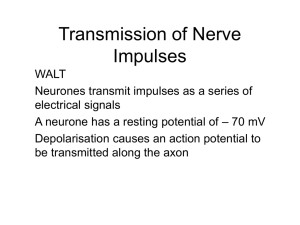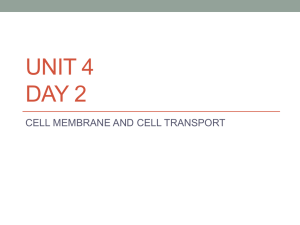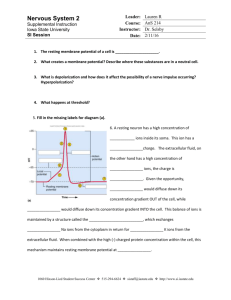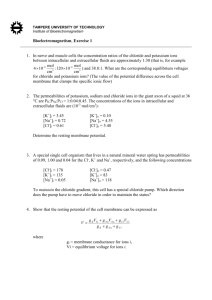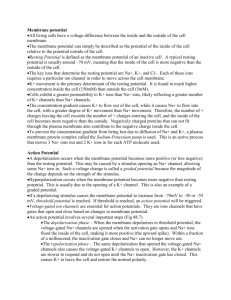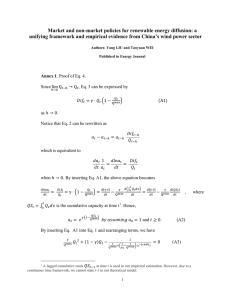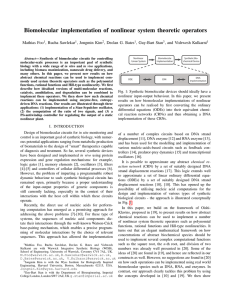Homework Set 4
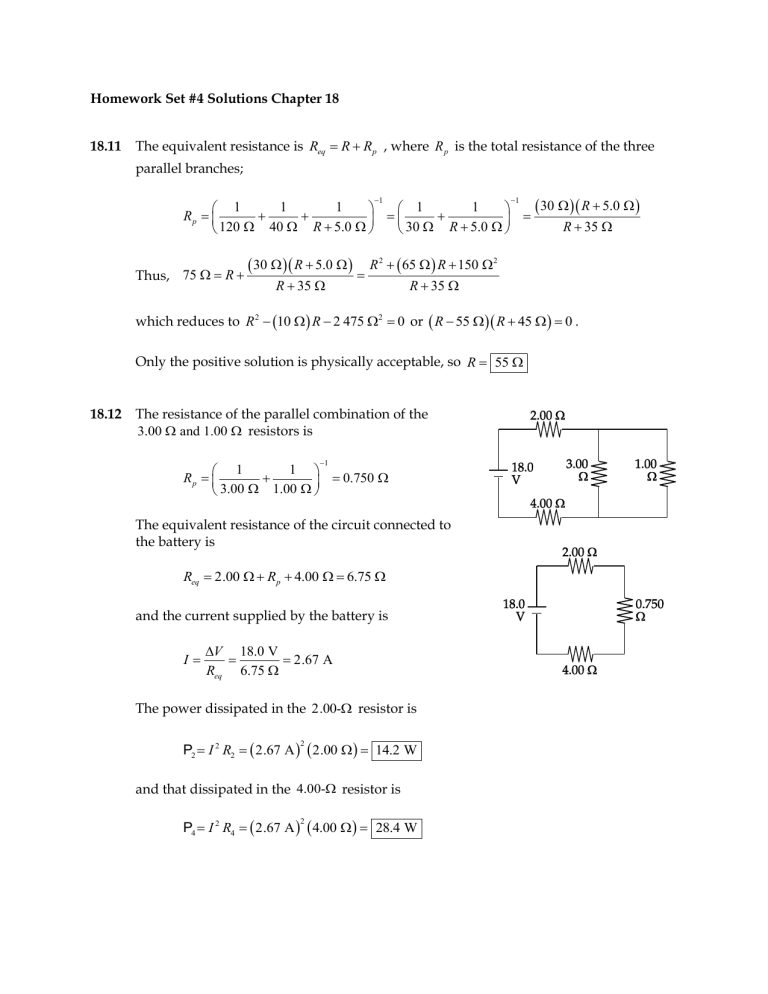
Homework Set #4 Solutions Chapter 18
18.11 The equivalent resistance is
R eq
R R p
, where
R p
is the total resistance of the three parallel branches;
R p
1
1
120 40
R
1
5.0
1
1
30
R
1
5.0
1
30
R
5.0
R
35
Thus, 75 R
30
R
5.0
R
35
which reduces to
R
2
10
R
R
2
65
R
150
R
35
2 475
0
or
R
2
55
R
45
0
.
Only the positive solution is physically acceptable, so
R
55
18.12 The resistance of the parallel combination of the
3.00 and 1.00
resistors is
R p
1
3.00
1
1.00
1
The equivalent resistance of the circuit connected to the battery is
R eq
2.00
R p
4.00
0.750
6.75
and the current supplied by the battery is
I
V
18.0 V
2.67 A
R eq
6.75
The power dissipated in the
2.00-
resistor is
P
2
2
2.67 A
2.00
14.2 W and that dissipated in the
4.00-
resistor is
P
4
4
2.67 A
4.00
28.4 W
The potential difference across the parallel combination of the
3.00 and 1.00
resistors is
p
I R p
2.00 V
Thus, the power dissipation in these resistors is given by
P
3
R
3
2 p
2.00 V
3.00
2
1.33 W and
P
1
R
1
2 p
2.00 V
2
1.00
4.00 W
18.27
Q max
C
, and
RC
6
5.0 s
Thus, at t
10 s
2
Q
Q max
1
e
t
e
2
1.3 10 C
18.30 (a)
I max
R
, so the resistance is
R
48.0 V
4
I max
The time constant is
RC
, so the capacitance is found to be
C
R
0.960 s
1.00 10 F
(b) t
Q max
C
1.92 s
is
Q
Q max
1
e
t
480 C 1
e
, so the charge stored in the capacitor at
1.92 s
0.960 s
e
2
18.34 The maximum power available from this line is
P max max
1800 W
Thus, the combined power requirements (2 400 W) exceeds the available power, and you cannot operate the two appliances together
.
18.35 (a) The area of each surface of this axon membrane is
A
2
r
0.10 m
2
6
2
10 m
2 and the capacitance is
C
0
A d
12
2
2
10 m
2
8
In the resting state, the charge on the outer surface of the membrane is
Q i
C
i
8
3
9
9
The number of potassium ions required to produce this charge is
9
N
K
Q e i
-19 C
+ and the charge per unit area on this surface is
Q
A i
2
10 m 2
1 e
-19 C
10
20
m
1 Å 2
2
1 e
2
1 e
290 Å
2
This corresponds to a low charge density of one electronic charge per square of side
290 Å, compared to a normal atomic spacing of one atom per several
Å
2 .
(b) In the resting state, the net charge on the inner surface of the membrane is
is
Q i
1.17 10 C
Q f
C
f
, and the net positive charge on this surface in the excited state
8
10
C
The total positive charge which must pass through the membrane to produce the excited state is therefore
Q Q f
Q i
5.0 10
10 C 1.17 10 C
9
corresponding to
N
Na
+
Q e
9
-19
C Na ion
+
9
(c) If the sodium ions enter the axon in a time of
9
I
Q
t
3
8.3 10 A
2.0 ms
, the average current is
(d) When the membrane becomes permeable to sodium ions, the initial influx of sodium ions neutralizes the capacitor with no required energy input. The energy input required to charge the now neutral capacitor to the potential difference of the excited state is
W
1
2
C
2 f
2
1
8
3
2
7.5 10
12
J
18.36 The capacitance of the 10 cm length of axon was found to be solution of Problem 18.35.
C
8 in the
(a) When the membrane becomes permeable to potassium ions, these ions flow out of the axon with no energy input required until the capacitor is neutralized. To maintain this outflow of potassium ions and charge the now neutral capacitor to the resting action potential requires an energy input of
W
1
2
C
2
2
1
8
3
2
4.1 10
11
J
.
(b) As found in the solution of Problem 18.35, the charge on the inner surface of the membrane in the resting state is
1.17 10 C
and the charge on this surface in the excited state is
5.0 10
10
C
. Thus, the positive charge which must flow out of the axon as it goes from the excited state to the resting state is
Q 5.0 10
10
9
9 , and the average current during the 3.0 ms required to return to the resting state is
I
Q t
18.37 From Figure 18.24, the duration of an action potential pulse is 4.5 ms. From the solution
Problem 18.35, the energy input required to reach the excited state is
W
1
7.5 10
12 J
The energy input required during the return to the resting state is found in Problem
.
18.36 to be
W
2
4.1 10
11 action potential pulse is
J
. Therefore, the average power input required during an
P
W total
t
W
1
t
W
2
7.5 10
12
11
J
3
1.1 10 W
11 nW
18.40 (a) The circuit reduces as shown below to an equivalent resistance of
R eq
14
.
(b) The power dissipated in the circuit is P
28 V
2
R eq
14
56 W
(c) The current in the original
5.0-
resistor (in Figure 1) is the total current supplied by the battery. From Figure 6, this is
I
V
28 V
2.0 A
R eq
14
18.48 The total resistance in the circuit is
R
1
1
R
1
R
2
1
1
2.0 k
1
3.0 k
and the total capacitance is C
C
1
C
2
Thus,
Q max
C
1 and
RC
1.2 k
6
6.0 s
1 000
The total stored charge at any time t is then
Q
Q
1
Q
2
Q max
1
e
t
or
Q
1
Q
2
e
1 000 6.0 s
(1)
Since the capacitors are in parallel with each other, the same potential difference exists across both at any time.
Therefore,
C
Q
C
1
1
Q
C
2
2
, or
Q
2
C
C
2
1
Q
1
1.5
Q
1
(2)
Solving equations (1) and (2) simultaneously gives
Q
1
e
1 000 6.0 s
and
Q
2
e
1 000 6.0 s

